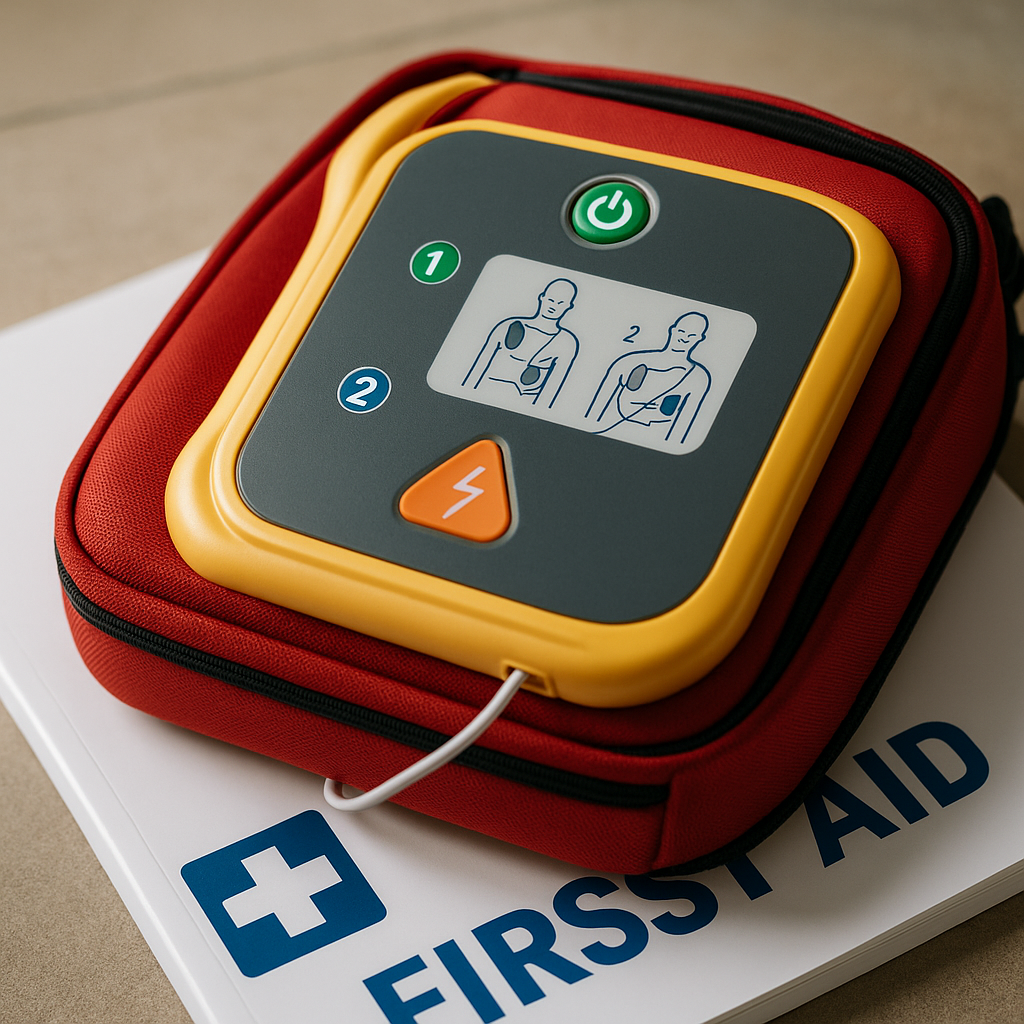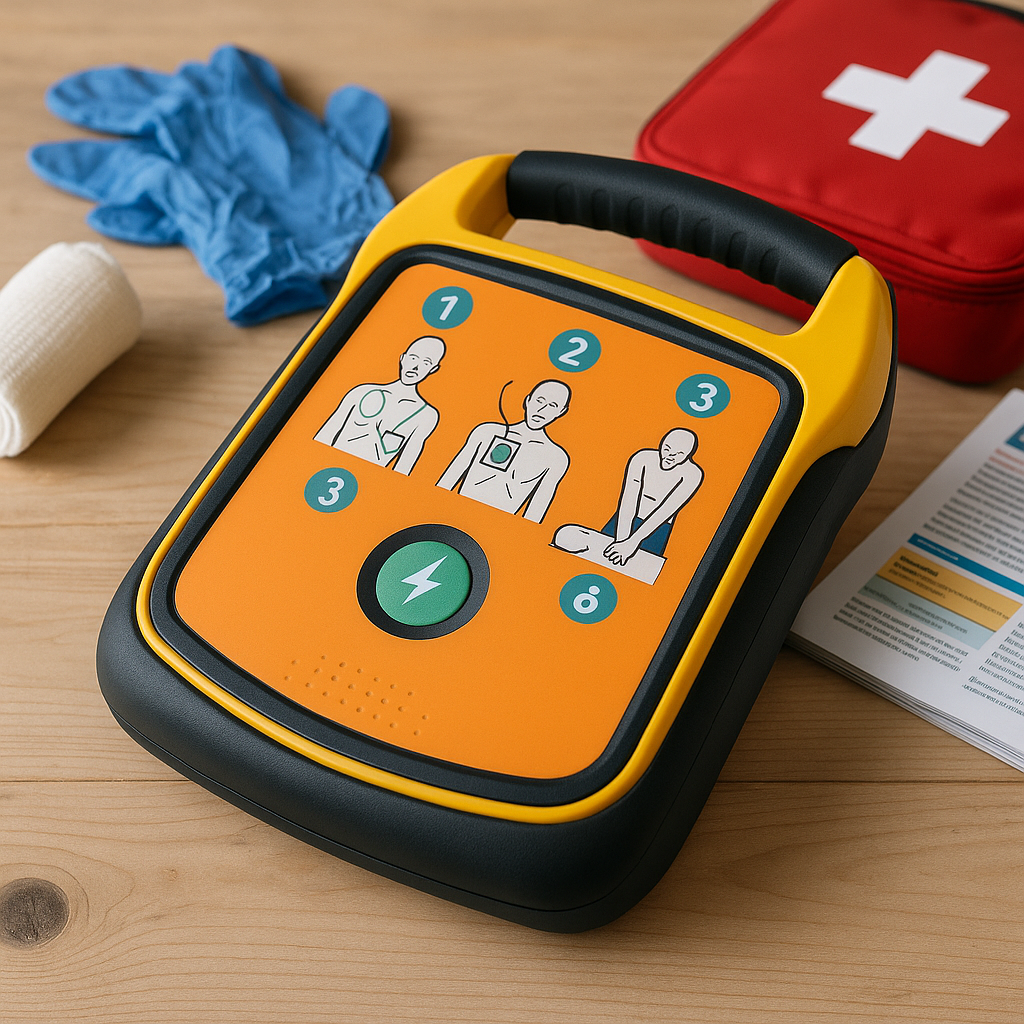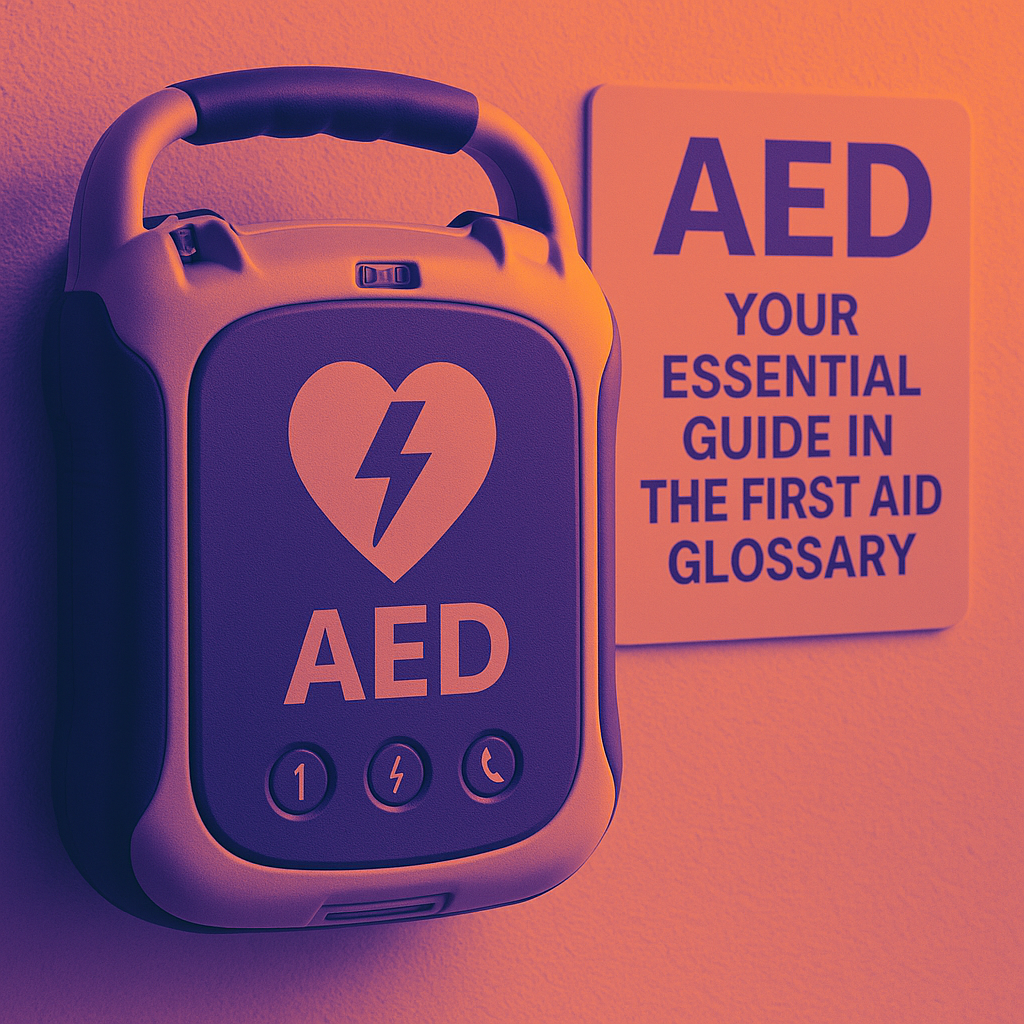- What is an AED?
- Key Facts about AEDs
- Understanding AEDs:
- Causes of Cardiac Arrest:
- Symptoms of Cardiac Arrest:
- Step-by-Step Guidance on Using an AED
- 1. Assess the Situation
- 2. Position the Victim
- 3. Check for Breathing
- 4. Retrieve the AED
- 5. Apply the AED Pads
- 6. Let the AED Analyze
- 7. Administer Shock if Advised
- 8. Continue CPR
- 9. Follow-Up
- Trainer Tips / Safety Advice
- Expert Recommendations:
- Common Mistakes to Avoid:
- Conclusion / Summary
AED – Your Essential Guide in the First Aid Glossary
What is an AED?
An Automated External Defibrillator (AED) is a portable device designed to treat people experiencing sudden cardiac arrest. By delivering a controlled electric shock to the heart, an AED can restore a normal rhythm and increase the chances of survival. These devices are user-friendly and provide step-by-step prompts, making them accessible even to those with minimal training.
Key Facts about AEDs

Understanding AEDs:
– AEDs are designed for use in emergencies, particularly during cases of cardiac arrest.
– They are equipped with voice instructions and visual prompts to guide the user through the process.
– Most AEDs are safe to use on adults and children and are typically found in public places such as shopping centres, airports, and schools.
Causes of Cardiac Arrest:
– Heart disease: The most prevalent cause.
– Electrolyte imbalances: Can lead to improper heart function.
– Drowning or asphyxiation: Situations in which oxygen supply is compromised.
– Severe trauma: Could disrupt the heart’s normal rhythm.
Symptoms of Cardiac Arrest:
– Sudden collapse or loss of consciousness.
– No breathing or abnormal breathing (gasping).
– Lack of pulse.
Step-by-Step Guidance on Using an AED
Using an AED can make the difference between life and death during a cardiac emergency. Follow these Australian-standard steps:
1. Assess the Situation
– Check for responsiveness: Gently shake the person and shout, “Are you okay?”
– Call for help: If unresponsive, immediately call 000 (Australia’s emergency number) or direct someone else to do so.
2. Position the Victim
– Carefully lay the person flat on their back on a firm surface (removing any obstacles if necessary).
3. Check for Breathing
– Look, listen, and feel for breathing for up to 10 seconds. If the person is not breathing normally, begin CPR immediately.
4. Retrieve the AED
– If an AED is available, turn it on and follow the voice prompts.
5. Apply the AED Pads
– Expose the chest by removing clothing and dry it if necessary.
– Position the pads as indicated:
– One pad on the upper right chest.
– The other pad on the lower left side, below the armpit.
– Note: Make sure no one is touching the patient when the AED is analyzing.
6. Let the AED Analyze
– The AED will instruct you when to stay clear. It will determine if a shock is needed.
7. Administer Shock if Advised
– If a shock is advised:
– Ensure everyone is clear of the victim.
– Press the shock button when prompted.
8. Continue CPR
– Resume CPR immediately after the shock, or if no shock is advised, continue with high-quality CPR.
– Perform 30 chest compressions followed by 2 rescue breaths. Continue until professional help arrives or the person shows signs of recovery.
9. Follow-Up
– Stay with the victim until emergency services arrive and provide them with the AED’s usage details.
Trainer Tips / Safety Advice

Expert Recommendations:
– Know Your AED: Familiarise yourself with the AED on site. Different models may have slightly varied instructions.
– Keep the AED Accessible: Ensure it is in a visible location and in working condition. Check the battery and pads regularly as per manufacturer’s instructions.
– Practice CPR: Regular training increases confidence and efficiency during emergencies.
Common Mistakes to Avoid:
– Delaying CPR: Immediate action is crucial; don’t wait for professional help before starting CPR.
– Touching the Patient During Shock Delivery: Ensure everyone is clear to avoid injuries.
– Neglecting to Follow AED Prompts: The device gives specific instructions; don’t forget to pay attention to them.
Conclusion / Summary
An AED is a vital tool in emergency situations involving cardiac arrest, offering a simple yet effective way to potentially save a life. Knowing how to use an AED can empower you and those around you to respond efficiently in a crisis. Remember, act swiftly—call for help, use the AED as instructed, and carry on with CPR. Regular training and knowledge of the device can make all the difference. Stay informed, stay prepared, and be a lifesaver in your community.

Leave a Reply